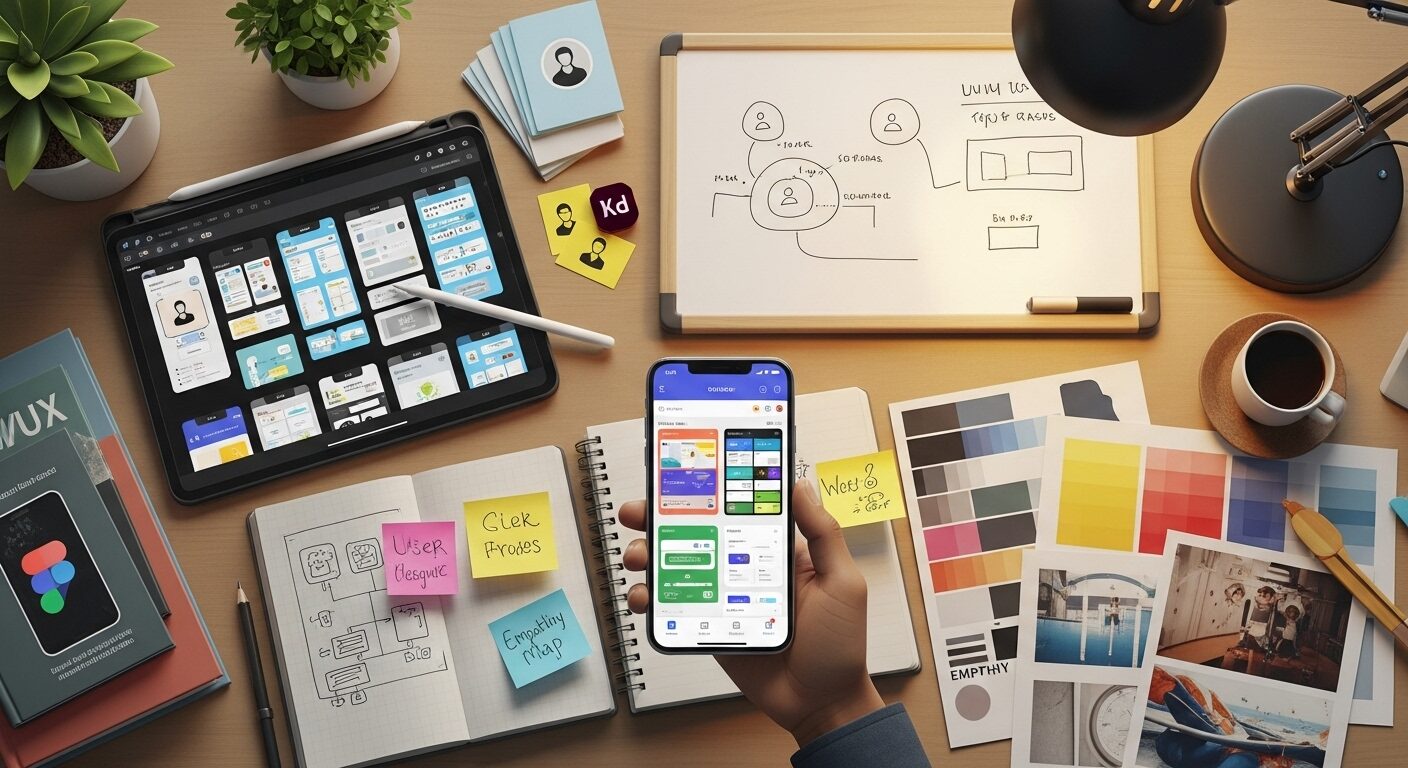Mobile App UI/UX Design: Crafting Seamless User Experiences
In today’s competitive digital landscape, a mobile application’s success hinges significantly on its User Interface (UI) and User Experience (UX) design. This is where Mobile App UI/UX Design becomes paramount. It’s not merely about making an app look good; rather, it’s about creating an intuitive, efficient, and delightful journey for every user. Consequently, businesses and developers alike are increasingly prioritizing robust UI/UX strategies to ensure their apps stand out and retain users.
Understanding Mobile App UI/UX Design Fundamentals
To truly excel in app development, a clear grasp of UI and UX is essential. While often used interchangeably, they represent distinct yet interdependent aspects of the design process. Understanding their individual roles and how they coalesce is fundamental.
What is UI Design?
UI, or User Interface, design focuses on the visual and interactive elements of a mobile application. Essentially, it dictates how an app looks and how a user interacts with it. This includes everything from screen layouts, buttons, typography, and color schemes to animation and interactive elements. A well-crafted UI is aesthetically pleasing and aligns with a brand’s identity, thereby enhancing the overall appeal and perceived professionalism of the app. Furthermore, it ensures visual consistency and clarity, guiding the user’s eye and attention.
What is UX Design?
UX, or User Experience, design, on the other hand, is concerned with the overall feeling a user has when interacting with the app. It’s about how easy and enjoyable it is to use. UX designers delve into user research, information architecture, interaction design, and usability testing to create a seamless and logical user journey. Their primary goal is to make the app efficient, accessible, and satisfying to use. Consequently, a strong UX reduces friction and frustration, leading to higher user retention and satisfaction.
The Symbiotic Relationship
UI and UX are two sides of the same coin in Mobile App UI/UX Design. A beautiful UI without good UX is like an attractive car that’s impossible to drive; conversely, an app with excellent UX but poor UI might be functional but unappealing. They must work in harmony. Therefore, UX designers lay the groundwork for the user journey, while UI designers bring that journey to life visually and interactively. Together, they create a product that is both functional and delightful.
Key Principles of Effective Mobile App UI/UX Design
Adhering to established principles significantly contributes to the creation of successful mobile applications. These guidelines ensure that the design is not only visually appealing but also highly functional and user-friendly. Ultimately, neglecting these principles can lead to user frustration and app abandonment.
User-Centricity
At the core of all good design is the user. A user-centric approach means designing with the target audience’s needs, behaviors, and preferences in mind from the very beginning. This involves extensive user research, creating user personas, and mapping out user journeys. Consequently, every design decision should be justified by how it benefits the end-user, ensuring the app genuinely solves their problems or fulfills their desires.
Simplicity and Clarity
Mobile screens are small, so simplicity is paramount. An effective design avoids clutter and presents information clearly and concisely. Each screen should have a singular, clear purpose. Furthermore, navigation should be intuitive, and calls to action should be prominent. Users should not have to think about how to use the app; instead, the actions should feel natural and obvious. Therefore, eliminating unnecessary elements streamlines the user experience and reduces cognitive load.
Consistency
Consistency is crucial for learnability and predictability. This applies to visual elements like typography, color palettes, and iconography, as well as interaction patterns, terminology, and overall app behavior. Consistent design across different screens and features within the app helps users build a mental model of how the app works. Moreover, adhering to platform-specific guidelines (e.g., Material Design for Android, Human Interface Guidelines for iOS) ensures the app feels native and familiar to users of that operating system.
Feedback and Responsiveness
Users need to know that their actions are being registered. Providing immediate and clear feedback is essential. This can include visual cues (e.g., a button changing color when tapped), haptic feedback (vibrations), or textual messages (e.g.,
Frequently Asked Questions (FAQ)
- Q: Why is Mobile App UI/UX Design so important?
- A: It directly impacts user satisfaction, app retention, and overall business success. A well-designed app is intuitive, enjoyable, and keeps users coming back. Poor UI/UX, conversely, often leads to high uninstall rates and negative reviews.
- Q: What’s the difference between UI and UX design?
- A: UI (User Interface) focuses on the visual and interactive elements of an app, like buttons, colors, and layouts – essentially, what the user sees and touches. UX (User Experience) focuses on the overall feeling and ease of use, encompassing the entire user journey, problem-solving, and efficiency of interaction. UI is a part of UX.
- Q: How can I ensure my mobile app design is user-friendly?
- A: To ensure user-friendliness, employ user-centric design principles, conduct thorough user research and persona creation, map out clear user flows, adhere to platform-specific guidelines (iOS Human Interface Guidelines, Android Material Design), and perform regular usability testing with actual users to gather feedback and iterate on your design.
If you want to create Mobile App UI/UX Design visit our contact page or contact them on Whatsapp.



